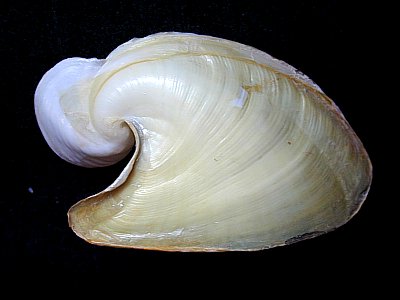
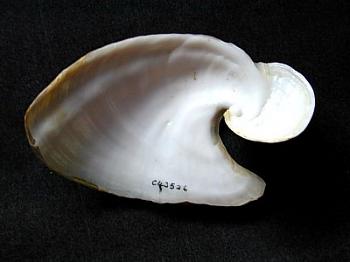
Dolabella gigas
(Rang, 1828)
Order: ANASPIDEA
Superfamily: APLYSIOIDEA
Family: Aplysiidae
DISTRIBUTION
Indian Ocean
PHOTO
Shell from Australian Museum collection (acquired in late 19th century) Either from Mauritius or Reunion, AM C43526. 72mm longest diameter Photo: Alison Miller.
There is no clear information on how the animal of D. gigas differs externallly from that of D. auricularia. Some reports suggest the body is covered with flattened warts without papillae (while other reports say this species has papillae and D. auricularia does not. The shell, with its saucer-shaped extension is immediately recognisable. Anatomically, the penis is armed with small spines which differs from the unarmed penis of D. auricularia.
See Valda Fraser's message with possible photos of this species.
See Dolabella auricularia page.
See shell of Dolabella auricularia.
References:
• Eales,NB (1946) The anatomy of Dolabella gigas. Proceedings of the Malacological Society of London 27(3): 109-118.
•Rang, S (1828) Histoire naturelle des Aplysiens, premiere famille de l'ordre des Tectibranches. In: Histoire naturelle Generale et particuliere des Mollusques. (Ed: Ferussac, D.) Firmin Didot, Paris, 84pp. Pls. 1-24.
• Bebbington,A (1974) Aplysiid species from East Africa with notes on the Indian Ocean Aplysiomorpha (Gastropoda: Opisthobranchia). Zoological Journal of the Linnean Society, 54: 63-99.
Rudman, W.B., 2000 (September 13) Dolabella gigas (Rang, 1828). [In] Sea Slug Forum. Australian Museum, Sydney. Available from http://www.seaslugforum.net/find/dolagiga
Related messages
Dolabella gigas ? from Reunion Island
June 13, 2007
From: Hugues Flodrops

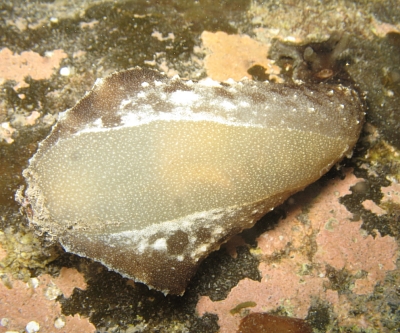
Dear Bill,
I took these pictures in Etang-Salé. I think it is a sea hare, my best guess is Dolabella auricularia but I'm not sure.
Locality: Rocky coast Etang-Salé, 1 metre, Reunion Island, Indian Ocean, 16 january 2007. Length: 120 mm. Photographer: Hugues Flodrops.
It was quite large posterior at about 60 mm. Thank you again for your forum.
Regards.
Hugues
hugues.flodrops@wanadoo.fr
Flodrops,H., 2007 (Jun 13) Dolabella gigas ? from Reunion Island. [Message in] Sea Slug Forum. Australian Museum, Sydney. Available from http://www.seaslugforum.net/find/19251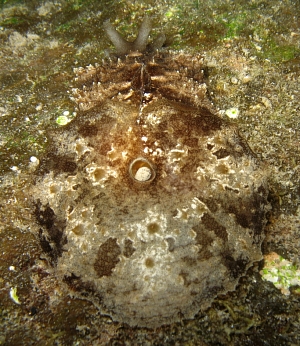
Dear Hugues,
This could be an interesting find. Dolabella auricularia is known throughout the Indo-West Pacific but there is a possible second species Dolabella gigas, from the western Indian Ocean. Although some workers have identified animals as D. gigas, all we really know about it is the shape of the shell. I have posted photos on the Forum of the shell of D. gigas from Reunion Island [see Fact Sheet ] from the Australian Museum's collections, and for comparison, photos of the shell of D. auricularia, also from Reunion Island. I have posted a few photos on the Forum of animals which I have tentatively identified as D. gigas, because of the relatively solid tubercles on the body, which also seem to be present on your animal.
At this stage, I think the only way we are going to be sure is if someone in the western Indian Ocean, photographs, then sacrifices an animal or two and removes its shell. That is the only way we will ever be abe to match the strange shell of D. gigas with the colour and shape of living animals.
Best wishes,
Bill Rudman
Dolabella gigas? from Mayotte
January 22, 2004
From: Marina Poddubetskaia & Isabelle Ruffin

Dear Bill,
Here is a large Sea-Hare from Mayotte. This specimen was photographed by Isabelle Ruffin in Mayotte, during a night dive.
Could you help us to identify it, please. We assume it is a Dolabella or Dolabrifera species, but we can't recognise it.
December 11, 2003
Kongou, Mayotte Island, Indian Ocean
Site: Recif de Peitro
Depth: 6m
Size: about 20cm
Photos: Isabelle Ruffin - www.biologie-marine.com
Best wishes,
Marina and Isabelle.
nembro@nembro.info
isabelle.ruffin@wanadoo.fr
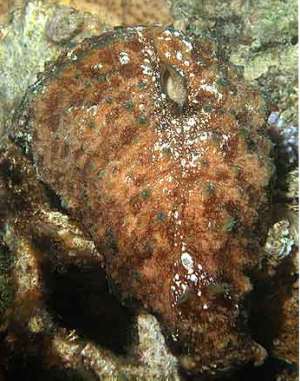

Dear Marina and Isabelle,
I suspect this is Dolabella gigas. I am afraid we only know this species for ceratin from its shell. It has been suggested that it has flattened warts on its body rather than elongate papillae but the information is contradictory. The only way to be certain will be to find an animal with a shell like I have photographed on the Fact Sheet. As the shell is internal this will of course mean phpotographing and making notes on the external anatomy of 'likely' living animals and then killing them and dissecting out the shell. I guess the problems involved are why this species has never been properly charcterised.
Best wishes
Bill Rudman
Dolabella gigas? from South Africa
May 21, 2001
From: Valda Fraser
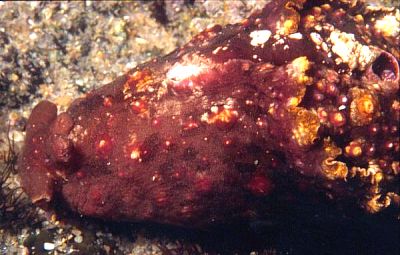
Dear Bill
I hope you have some ideas about this one! I found it on a sandy patch near some rocks. I look forward to hearing your opinion.
Thanks.
Locality: Park Rynie, south coast KwaZulu-Natal, SOUTH AFRICA, 25m
Date: April 2001
Size: 12cm
Regards
Valda Fraser
valdafraser@mweb.co.za
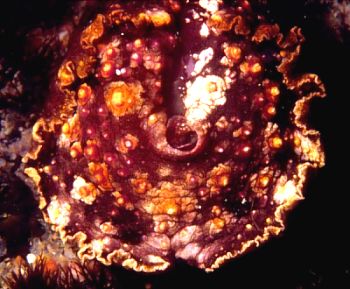
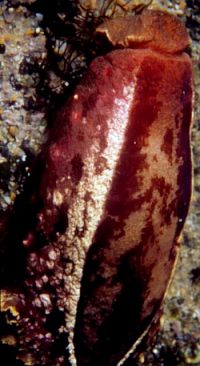
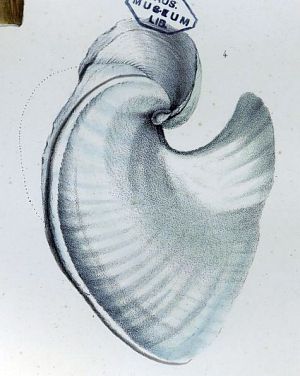
Dear Valda,
This is an interesting find. It is clearly a species of the Sea Hare genus Dolabella but doesn't look at all like the common species Dolabella auricularia. I think it is probably Dolabella gigas, which to my knowledge has never been ilustrated alive. It is reported from the Indian Ocean islands of Mauritius and Reunion and I am pretty sure it has been reported from South Africa. Its shell and armed penis distinguish it from D. auricularia, but published accounts on its external features are rather contradictory. However the conical warts or 'tubercles' in your animal may be a characteristic feature.
The only way to be sure would be to get the shell out of a specimen and have a look at the penis. I have posted alongside Rang's (1828) original illustration of the shell [Plate 3, fig. 4].
Best wishes,
Bill Rudman
